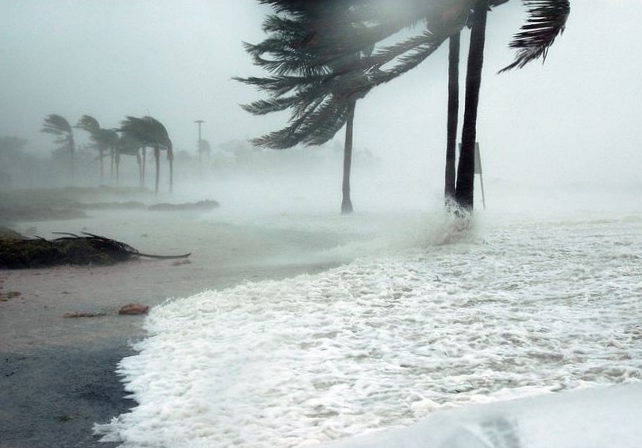NOAA: Wet Season Rainfall Outlook for Hawai‘i
 The National Oceanic and Atmospheric Administration issued a wet season rainfall outlook report for the state today, Tuesday, Oct. 17, 2017, for October 2017 through April 2018.
The National Oceanic and Atmospheric Administration issued a wet season rainfall outlook report for the state today, Tuesday, Oct. 17, 2017, for October 2017 through April 2018.
Probabilities favor above average rainfall through the wet season. Recovery from existing drought conditions is probable for windward Big Island and Maui.
However, existing drought may persist or worsen in some of the leeward areas, especially on the Big Island and Maui County.
NOAA’s Climate Prediction Center reported that the current ENSO-neutral conditions are likely transitioning to a La Nina state (cool phase) with a 55 to 60% chance of La Nina developing during the fall.
CPC issued a “La Nina Watch” on Sept. 14, 2017.
After development, La Nina is forecast to persist until the spring when conditions may transition back to ENSO-neutral.
There is uncertainty in the eventual strength of this La Nina episode.
Above average rainfall is reflected in the climate model consensus predictions which capture large scale conditions but not Hawai‘i’s microclimates.
Wet seasons during recent moderate to strong La Nina events have had wet conditions over the windward slopes but dry conditions over leeward areas.
Weaker La Nina events had more rainfall make it to leeward areas.
Wet Season Preparedness Reminders
Do not drive on roads with fast-flowing water.
- Just two feet of fast-flowing water can sweep most vehicles off a road
- Road may also be severely undercut
Do not walk across flooded streams.
- If you’re hiking and get stranded, wait for the water to recede
- Streams in Hawai‘i generally recede quickly
Expect more rainy weather impacts.
- Increased road travel times
- Possible detours or road closures due to flooding or landslides
- Outdoor activities may be postponed, canceled, or adjusted
The wet season brings increased potential for lightning strikes.
- Be prepared for power outages.
- Move indoors when you hear thunder.
If you travel through a flood-prone area, identify alternate routes ahead of time.
If you live in a flood-prone area, have an evacuation plan in case flood waters
quickly threaten your home.
Stay informed of conditions that could change rapidly.
- Sunny skies can turn cloudy with intense rainfall in less than an hour.
- Check out the latest forecasts, watches, warnings, and advisories via the
media, NOAA Weather Radio, the Internet, or one of several weather
mobile phone apps - Wireless Emergency Alerts (WEA) on mobile phones notify you that
you’re in a flash flood warning area
DRY SEASON SUMMARY
In Its summary of the dry season (May through September 2017) NOAA reported that statewide, most locations had near to below average rainfall.
The drought present on the Big Island at the start of the dry season spread to three other counties and intensified during the summer, mainly affecting ranching operations and localized water service areas on Maui and the Big Island.
According to NOAA, the 2017 dry season was the 13th driest dry season in the last 30 years (based on rankings from 8 key sites).
NOAA reported that the 2015 dry season was the wettest in the last 30 years and the 2003 dry season was the driest in the last 30 years.
The expected wet conditions for windward slopes did not occur during the 2017 dry season.
Unlike 2015 and 2016, below average tropical cyclone activity in 2017 did not provide a boost in rainfall during the summer months.
On the Web:
NOAA National Weather Service Honolulu HI
NOAA Weather Ready Nation
NOAA Climate Prediction Center
FEMA Flood Preparedness Information
Hawaii Emergency Management Agency
State of Hawaii-DLNR National Flood Insurance Page
U.S. Drought Monitor







